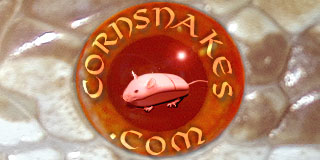I have a terranium pick out is that a good starter pic? It's a 12x12x12
Agree with Susan on the size. It's an expensive buy for something with a limited useful life. You're probably better off getting something basic for the Corn's first 18 months, then promoting him/her into a fancier adult-sized tank or vivarium/terrarium, which would be bigger than the one you have planned. The guideline is that the Corn should be able to stretch out along the length and width. As most Corns reach about 4-5 feet, that gives you a tank 3 feet long and about 18 inches deep as a minimum.
Question: how do I control the humidity? ...heat rock or heat pads/strips ?
Humidity and heating are two different issues really. I wouldn't worry about humidity. All of my Corns seem to shed perfectly in a normal domestic humidity level (not high here in the UK). If you get a bad shed, you can offer a humid hide so that the snake has a higher humidity environment to use if it chooses.
Heating is best done with an undertank heat mat (UTH), which should cover one-third of the floor area of the tank. The idea is that it heats the floor surface where the snake is and not the air above the floor (where the snake isn't). Ideally, a Corn needs belly heat to digest, rather than an overhead heat source. In addition, Corns aren't a basking species so overhead sources can make them more inclined to hide away if they're light-based.
You will need to use a thermostat with a UTH as they're designed for use with a range of reptiles, some of which need temps that would be dangerous for a Corn. The thermostat probe should be set on the floor of the tank, immediately above the UTH.
i wanna set my habit up with half a heated area and half a cool area
That needs to be one-third heated, two-thirds cool. If your Corn is anything like mine, they'll spend most of their time at the cool end and only venture over to the warm area when digesting.
with the cool area having a water fall to a pond
Good call to have the water in the cool area, but I agree with Susan that a waterfall and pond might be making a rod for your own back. One good Corn poop in that setup and the water pump will clog badly!
Also it might make the humidity too high even at the cool end, which gives a risk of mould or scale rot. You'd need to be very careful to ensure proper ventilation.
and greenery with a log across both sides an in my hot area a rock..both areas will have a hideout..
My top tip would be to get as many hides and as much ground cover in your tank as you can fit in there. Corns are naturally secretive and seem to move around more if they can get around without venturing out into the open. I use sections of cork bark as naturalistic looking hides. They can be a bit of a beggar to clean but they last for years and look great. The same could be said of plastic foliage.
A rock is fine and would give them something to shed against, but you need to make sure that it's properly clean and having been outside, not carrying traces of pesticide, weedkiller, fertiliser etc.
I wouldn't bother with live plants unless you're planning to go all-out for a bio-active environment which an take quite a lot of setting up (see "The Art of Keeping Snakes" by Phillippe de Vosjoli). Corns will squash them, climb on them, tip them over and get compost everywhere. Also plants need UV light and Corns don't, meaning that you'd have to keep swapping plants out to a better environment in order to keep them alive.
We're always keen to recommend two books that will tell you pretty much everything you'll ever want to know - and which are just a joy to read! "Corns Snakes: The Comprehensive Owner's Guide" by Kathy and Bill Love, and "Corn Snakes in Captivity" by Don Soderberg.
